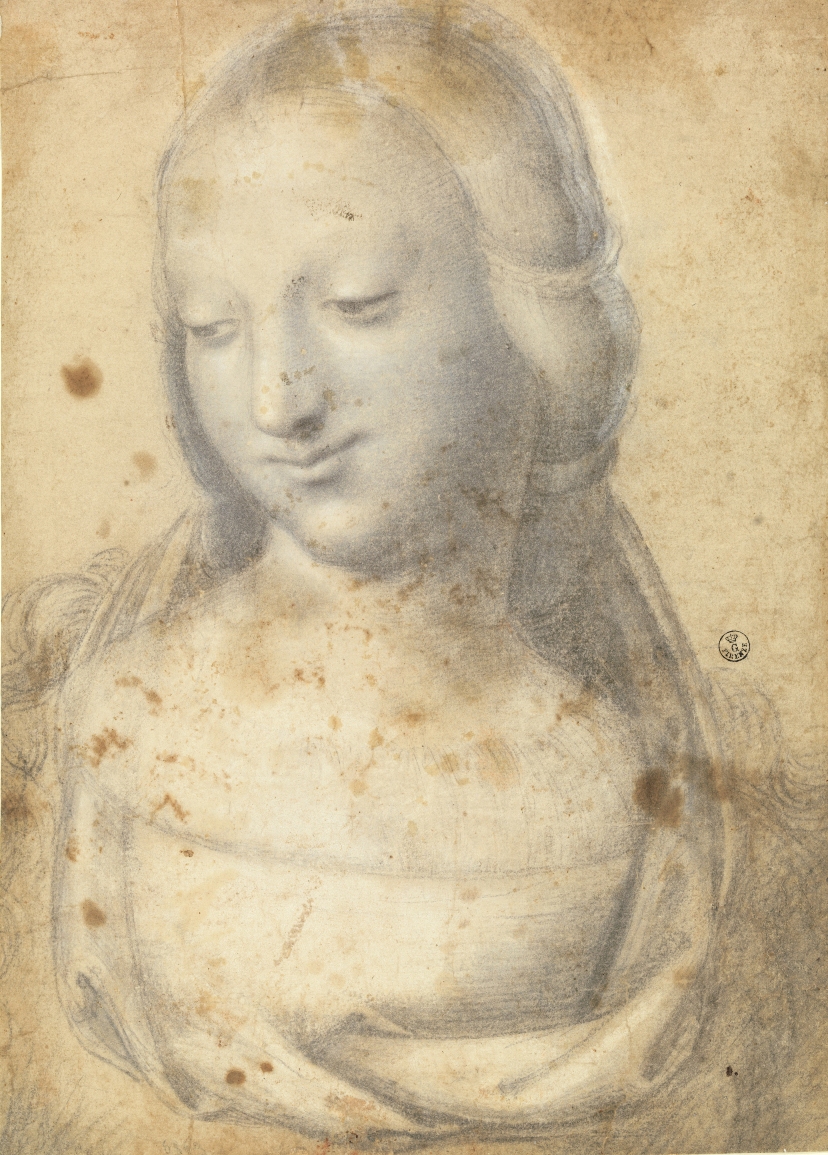
Plautilla Nelli, Bust of a Young Woman, 16th century, black chalk (Uffizi Gallery, Florence, Gabinetto dei Disegni e delle Stampe, inv 6863F)
Recovering forgotten “masters”
When Renaissance painter Plautilla Nelli got her first solo exhibit at Florence’s Uffizi Gallery in 2017, some art historians asked . . . Plautilla who??
Despite being a celebrated artist in sixteenth-century Florence, Nelli had been forgotten by art history to the point that even scholars of Renaissance art knew nothing of her. How was this possible?
In a word, gender.
Nelli’s obscurity was the cumulative effect of historical gender imbalances that limited women in the Renaissance and modern art worlds. While the past cannot be changed, gender balance in contemporary scholarship and curatorial practice is bringing women Renaissance artists to light.
The Renaissance glass ceiling: then and now
As the Guerrilla Girls have highlighted, the art world has been male dominated. Nevertheless, women have always been artists, even famed artists. So why were many forgotten?
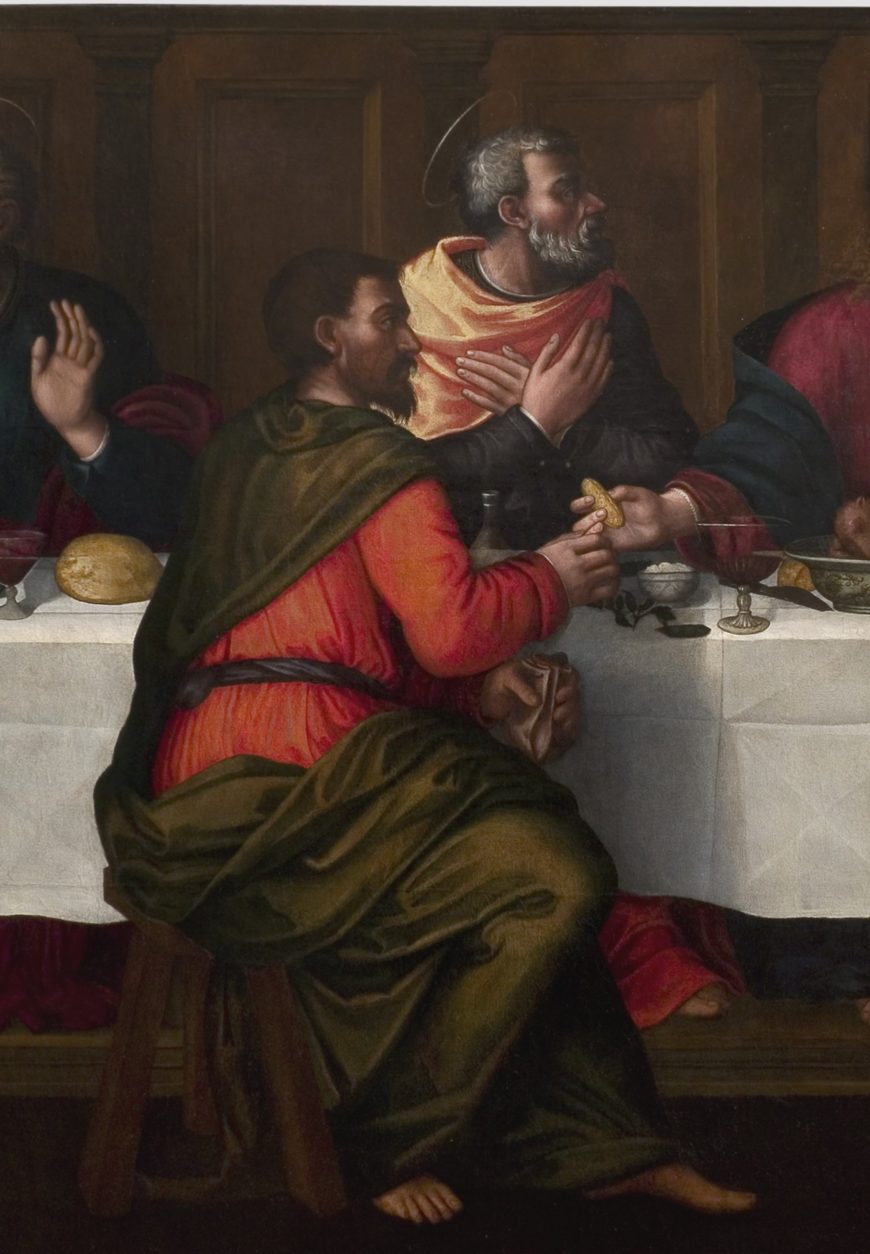
Plautilla Nelli, detail of The Last Supper, c.1570s, 6.7 m long, made for her Convent of Santa Caterina, Florence (Museo di Santa Maria Novella, Florence)
The brief answer is: many reasons. For instance, the academic study of art history evolved through the eighteenth and nineteenth centuries, and the men who wrote it developed a canon of great artists and narratives that connected great art and masculinity. Male artists were the subjects of most books and research, and museums highlighted these well-known male artists. Art by women was often overlooked or considered as exceptions, and thus was more likely to fall into obscurity, disrepair, or museum storage. In some cases, art by an under-appreciated female artist was attributed to a better-known male artist.
Scholars are now pulling Renaissance women artists from obscurity, discovering how they succeeded in the gendered societies in which they worked.
Education was a key point. Much of Renaissance art revolves around learning – about classical antiquity, philosophy, anatomy, or mathematics, not to mention the skills learned as an apprentice in a professional art studio. But gender norms of the time meant women’s education rarely exceeded what was needed to be wives and mothers. With almost no opportunities for apprenticeships with master/male artists, women were at a disadvantage.
Yet, talented women did become artists under certain circumstances, such as:
- nuns in learned monasteries (e.g., Sister Plautilla Nelli is unusually well-documented. Though nuns were manuscript illuminators and painters since the middle ages, only a few names (e.g. Herard of Landsburg, St. Catherina of Bologna, Guda) are recorded.
- noble women with exceptional educations (e.g., Sofonisba Anguissola, Lucia Anguissola, but also most of the nuns above); or
- most commonly, women born into a family of artists (e.g., Levina Teerlinc, Catarina van Hemessen, Artemisia Gentileschi, Elisabetta Sirani, Lavinia Fontana)
In all cases, the public personae of women artists were closely tied to gendered ideas that expected a respectable woman to be virtuous, pious, and obedient to God and her father/husband. If an artist failed to meet these standards, it could mean the end of her career (such as the brief career of sculptor Properzia de’Rossi).
The nun artist: Plautilla Nelli (1524–1588)
“Nun Art” was considered to be exceptionally spiritual and the holy images of Sister Plautilla Nelli’s studio, such as this image of “St. Catherine with Lily,” were especially sought after by the Florentine elite. Nelli’s contemporary Giorgio Vasari notes that, “in the houses of gentlemen throughout Florence, there are so many [of Nelli’s] pictures, that it would be tedious to attempt to speak of them all.”
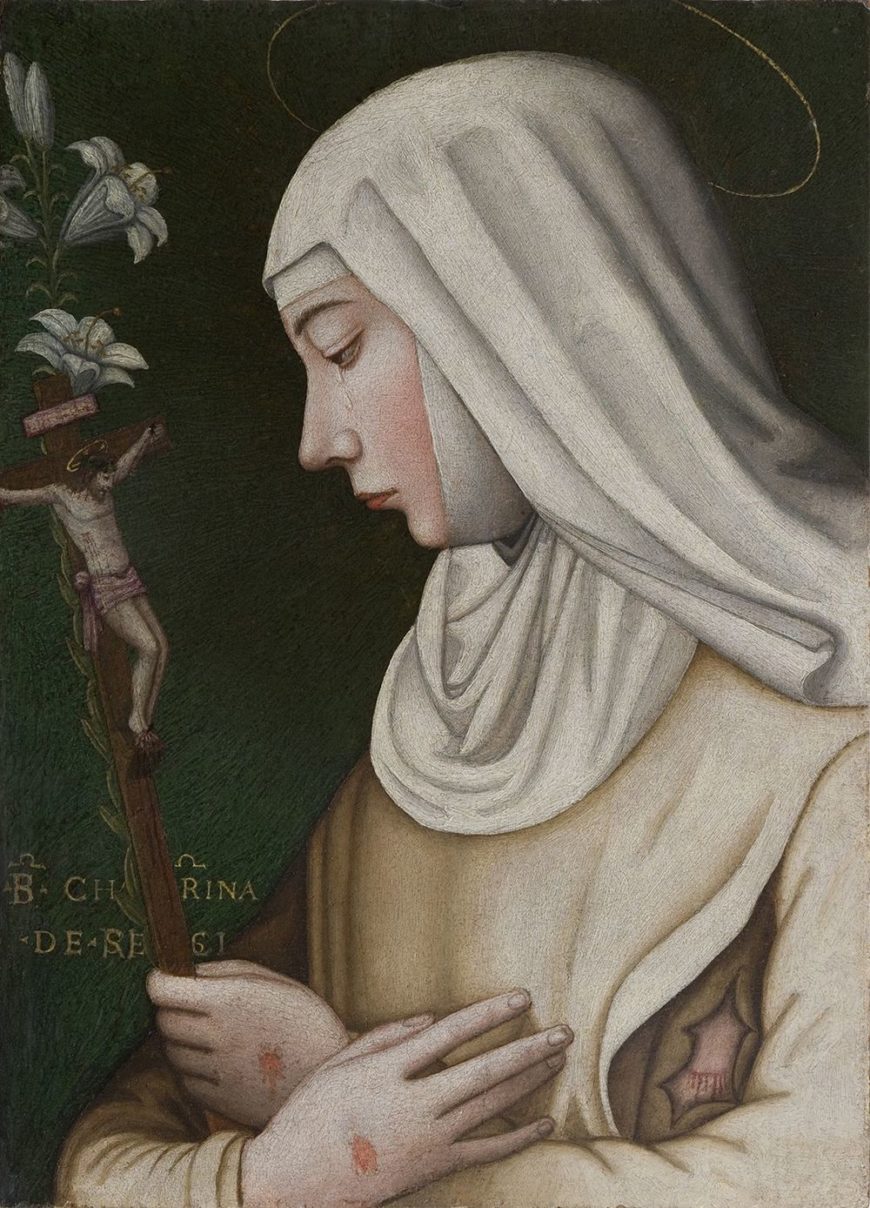
Plautilla Nelli (and workshop?), St. Catherine with Lily, c.1550s–1560s, oil on canvas. 38 x 37.5 cm (Uffizi Gallery, Florence) One of several known copies from Nelli’s workshop.
So how did this nun learn to paint like an angel? Like many daughters of wealthy families, 14-year-old Plautilla Nelli was placed in a convent. This was a cost-saving choice, as a convent dowry was less than a marriage dowry. Luckily for Nelli, her convent, Santa Caterina da Siena in Florence, encouraged its nuns not only to pray but also to learn and draw.
It is unclear how she learned to paint but Nelli became a prolific artist, overseeing a convent studio with perhaps as many as eight female nun followers. Her success was such that Vasari included Nelli as one of only four women among over 100 artists in his 1550 Lives of the Artists. Vasari notes that she is a “nun and now Prioress” who is “beginning little by little to draw and imitate in colour pictures and painting by excellent masters.” Vasari also notes that she could have been one of the greatest painters in the world if only she could have studied mathematics and anatomy as male artists did (something forbidden to women and especially a nun). [1]
Despite these gendered limitations, Nelli produced large-scale devotional paintings and manuscript illuminations for church and private commissions. Today, about twenty extant paintings by Nelli are known, including the largest and earliest known painting of the Last Supper by a woman.

Plautilla Nelli, The Last Supper, c.1570s, 6.7 m long, made for her Convent of Santa Caterina, Florence. (Museo di Santa Maria Novella, Florence). This is the only signed artwork of Nelli’s to survive.
Forgotten in storage for much of the twentieth century, Nelli’s Last Supper was restored with the help of the Advancing Women in the Arts Foundation (AWA) and in 2019 became part of the permanent display in the Museo di Santa Maria Novella in Florence.
Educated lady: Sofonisba Anguissola (1532–1625)
Sofonisba Anguissola’s self-portraits display the often contradictory virtues expected of a young noblewoman and of an artist. She presents herself as both modest maiden and virtuoso artist, as in this miniature portrait, probably made for a prospective patron. The medallion is inscribed in Latin: “The maiden Sofonisba Anguissola, depicted by her own hand, from a mirror, at Cremona.”
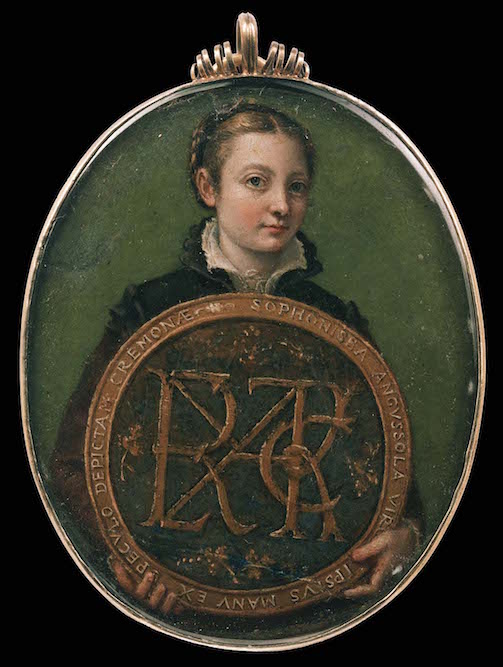
Sofonisba Anguissola, Self-Portrait, c. 1556, varnished watercolor on parchment, 8.3 x 6.4 cm (Museum of Fine Arts, Boston)
It was this talent, along with a spotless reputation and an exceptional education (facilitated by her impoverished but forward-thinking, nobleman father), that would help Anguissola become a painter at the court of King Philip II of Spain. Yet as men were court painters and Anguissola was a woman, she was given a title more appropriate to her gender: lady-in-waiting to Philip’s queen, Elizabeth of Valois.
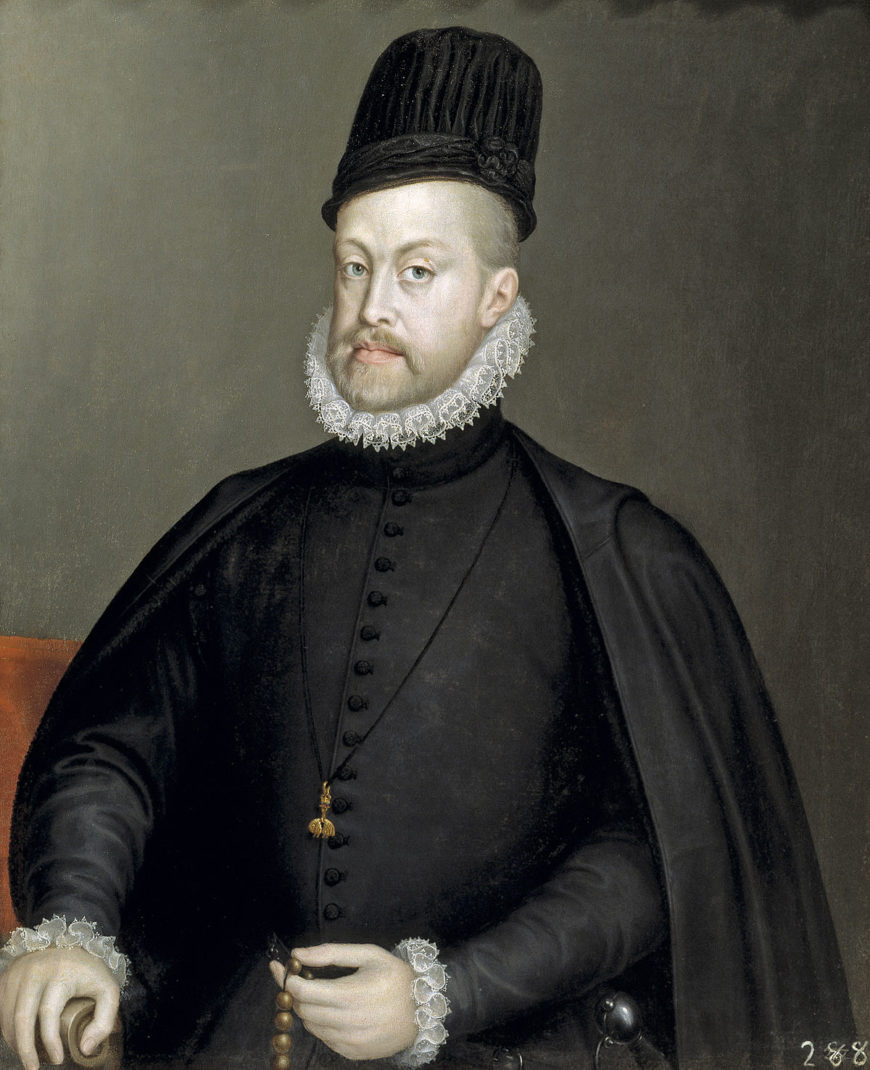
Sofonisba Anguissola, Philip II, 1565, oil on canvas 72 x 88 cm (Prado Museum, Madrid)
These types of gendered adjustments allowed the Cremona-born artist to work at the highest level in the male world of court art. But these same adjustments may also have contributed to misattributions of Anguissola’s works. For instance, Anguissola’s 1565 Portrait of Philip II was mistakenly attributed to “court artist” Juan Pantoja de la Cruz from at least the seventeenth century, despite the fact that it strongly resembled her other known works. Only after scientific examinations in the 1990s was the work reattributed to Anguissola. Today the number of known works by Anguissola continues to rise, helped in part by a major exhibit at the Museo del Prado in 2019.
Artist’s daughter: Levina Teerlinc (1510?–1576)
Bruges-born artist Levina Teerlinc was among the highest paid and most prolific artists at the Tudor court in England for about thirty years but today only five or six works can tentatively be attributed to her hand. These all measure under a few centimeters.

Levina Teerlinc, Portrait Miniature of Lady Katherine Grey, Countess of Herford, c. 1555–1560, about 36mm wide (Victoria & Albert Museum, London)
Miniatures, or tiny detailed portraits, were a popular format made and given as keepsakes and gifts that could be viewed privately or worn as a pendant or brooch. In a pre-photography world, miniature portraits allowed individuals to distribute their own image to other people in an intimate format. And few wanted more portraits than the nobles of the Tudor court, in part because portraits offered highly curated images reflecting contemporary styles and status. The Portrait Miniature of Lady Katherine Grey is typical of Teerlinc’s work. With meticulous and flattering detail, she paints the fashionable cousin of, and once a possible successor to, Queen Elizabeth I.
Teerlinc was a master miniaturist and manuscript illuminator. She was trained in the studio of her father, celebrated Flemish painter Simon Bening. When she arrived in England with her husband around 1546, Levina Teerlinc took up the role of “royal paintrix,” first at the court of Henry VIII and successively for Edward VI, Mary I, and Elizabeth I. Part of the royal household, she painted not only aristocratic portraits but numerous other works today only known from court inventories. Her high status at court is reflected in her annual salary: a remarkable forty pounds a year, which was four times the average annual earnings for a skilled tradesman and ten pounds more than the salary of her male predecessor as court artist, Hans Holbein.
A 21st-century renaissance
Michelangelo, Leonardo, and the famed male artists of the Renaissance deservedly remain central figures in art history. But they are only half the story. Despite obstacles, women were exceptional artists in the Renaissance. Today’s task is to continue to recover them from the dusty back shelves, storage rooms, and the past indifference of art history.
Notes:
- Giorgio Vasari, The Lives of the Artists, trans. Julia Conway Bondanella and Peter Bondanella (London: Oxford University Press, 1991), 342.
Additional resources:
Read more about Plautilla Nelli on Advancing Women Artists
Watch a video about the restoration of Nelli’s Last Supper
Learn more about Sofonisba Anguissola’s Boy at the Spanish Court at the San Diego Museum of Art
Fausta Navarro, Plautilla Nelli: arte e devozione sulle orme di Savonarola = Plautilla Nelli: Art and Devotion in Savonarola’s Footsteps (Livorno : Sillabe, 2017)
Sheila Barker, Women Artists in Early Modern Italy: Careers, Fame, and Collectors (London: Harvey Miller Publishers, an imprint of Brepols Publishers, 2016)
Leticia Ruiz Gómez, A Tale of Two Women Painters: Sofonisba Anguissola and Lavinia Fontana (Madrid: Museo del Prado exhibit catalogue, 2019)
The National Museum of Women in the Arts, Washington DC. n.d. “Artist profiles.”

